Tagged With ‘lavender’
Elie Saab
Essence No 6: Vetiver
29 November, 2015
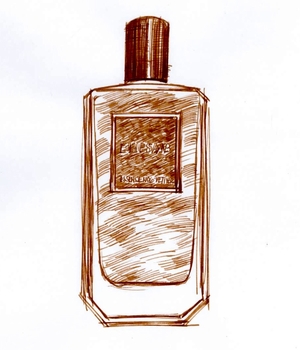 Is it just me, or would you be more impressed if a successful fashion designer decided not to do a perfume range than decided to do one? But there we are: perfume and fashion have gone together since the days of Paul Poiret, and you can’t blame Elie Saab from joining the crowd.
Is it just me, or would you be more impressed if a successful fashion designer decided not to do a perfume range than decided to do one? But there we are: perfume and fashion have gone together since the days of Paul Poiret, and you can’t blame Elie Saab from joining the crowd.
Actually perhaps that’s a bit unfair, as Saab’s new perfume, Essence No 6: Vetiver, is a really fine unisex fragrance, cleverly balancing the slightly damp earthiness of vetiver with the woody, floral scent of violet and herbal lavender.
There again maybe I shouldn’t have been surprised, as like all of Saab’s fragrances, Vetiver is the work of Francis Kurkdjian, who is now arguably the leading perfumer of his generation. French-born Kurkdjian sprang to fame at the age of 26 when he created Le Male for Jean-Paul Gaultier, and he has gone on to launch a stream of commercial hits, from Armani Mania to My Burberry. Yet he’s remained a highly creative perfumer, with his own excellently packaged Maison Francis Kurkdjian line.
In 2010 Saab signed a ten-year deal with Beauté Prestige International, one of the big perfume licensing companies (which in turn is owned by Shiseido), and the first Elie Saab perfume came out the following year. The Essences range was launched in August 2014, and Essence No6: Vetiver is the latest addition, along with Essence No7: Neroli (funnily enough there isn’t an Essence No5 in the range, presumably for Chanel-related reasons).
Vetiver has long been one of the most popular ingredients in perfumery, particularly in men’s perfumes. It’s not hard to understand why: the dried roots of this tropical grass have a wonderfully earthy, sexy, slightly bitter smell. You could probably use good-quality vetiver oil as a scent in its own right, but understandably enough, creative perfumers enjoy the challenge of combining it with other ingredients to bring out its specific qualities. In Guerlain’s classic Vétiver, for example, it’s combined with the lemony citrus smells you’d expect to find in a men’s cologne.
For Essence No6: Vetiver, perfumer Francis Kurkdjian has done something a bit different, by softening the earthy vetiver with the gentler, less abrasive scents of lavender, cloves, geranium and bergamot orange. Together they give Essence No6 a gentle touch of fruit, and even a hint of chocolate, though vetiver remains the star of the show. The result is deliciously rich and rounded, and you can really sense the quality of the ingredients. The chunky glass bottle, too, has an appealing weight to it, helped by the attractively unfussy, rather retro design, like a men’s after-shave from the 1930s. Perfect for wearing every day.
Guerlain
Derby
21 August, 2015
 What a great perfume this is. Rich and complex yet totally wearable, Derby smells of old-fashioned luxury and style. It’s the kind of perfume that should have been name-checked in The Great Gatsby (surely the worst-written major novel of the 20th century), and yet it was first launched as recently as 1985, when electropop ruled the airwaves and shoulder-pads the size of aircraft carriers filled the pages of the fashion magazines.
What a great perfume this is. Rich and complex yet totally wearable, Derby smells of old-fashioned luxury and style. It’s the kind of perfume that should have been name-checked in The Great Gatsby (surely the worst-written major novel of the 20th century), and yet it was first launched as recently as 1985, when electropop ruled the airwaves and shoulder-pads the size of aircraft carriers filled the pages of the fashion magazines.
It was created by Jean-Paul Guerlain, the last member of the family to run the brand and a great perfumer in his own right: his other triumphs include Habit Rouge, Chamade and the fantastic Vétiver. Derby smells like crushed aromatic herbs when you first spray it on: rosemary and lavender with a hint of mint, but mixed with more exotic things like patchouli and sandalwood. Mace and pepper add a tiny touch of spice, while oakmoss, leather and vetiver give it extra depth and staying-power. After a while it smells more leathery than anything else, though still with herbs and spices mixed in – the scent of a Greek mountainside in summer.
For a long time Derby was quite hard to track down, which added to its mystique, but in 2005 Guerlain relaunched it as part of its Parisiens collection, at which point is was probably (though of course perfume companies never tell you these things) slightly ‘tweaked’ to change some of its ingredients (such as oakmoss) to comply with EU legislation. In 2011 it was repackaged in what I think is a rather cheap-looking balsawood frame, and its price went up as well: today it’s one of Guerlain’s most expensive fragrances, which I think is a shame, as it deserves to be widely worn.
Christian Dior
Jules
 Sage isn’t everyone’s favourite herb, though turkey stuffing wouldn’t the same without it. It’s used less often in perfumery than in cooking, but Jules shows what a great ingredient it can be in the hands of a brilliant perfumer.
Sage isn’t everyone’s favourite herb, though turkey stuffing wouldn’t the same without it. It’s used less often in perfumery than in cooking, but Jules shows what a great ingredient it can be in the hands of a brilliant perfumer.
The ‘nose’ in this case was Jean Martel, who worked for the French fragrance company Givaudan in the 1970s and 1980s and deserves to be far better known, not least because he also created that 1970s classic, Paco Rabanne for Men.
Jules was launched in 1980, with a brilliant advertising campaign featuring posters by René Gruau, arguably the greatest fashion illustrator of the last century, which helped the first bottles sell out in record time. Martel combined sage (which has a slightly catty smell) with cedar and other things like wormwood, lavender and bergamot. To me the result smells like sage and slightly peppery leather, though there’s a long list of other ingredients, including cumin, sandalwood, oakmoss, jasmine, musk and rose.
Despite its initial success, Jules has since been overshadowed by the success of Kouros, which was launched the following year. Created for Yves Saint Laurent by the brilliant Pierre (Cool Water) Bourdon, Kouros shares Jules’ clean / dirty / sexy character, and both scents belong to the same fragrance ‘family’, the fougères – a style of perfumes, usually aimed at men, based on a combination of lavender and coumarin (originally derived from tonka beans but usually synthesised).
Of course, Kouros’ ongoing popularity may be because it’s inherently superior to Jules, but actually I think it’s more to do with the fact that over the years Kouros has benefited from regular advertising, while Dior seems to have forgotten that Jules ever existed, which I think is a terrible shame.
To make matters worse, while you can buy Kouros pretty much anywhere, Jules has become ridiculously hard to find: I don’t know anywhere in the UK that sells it, and even in Paris the only place that seems to stock it is the department store Bon Marché, though you can buy it from Dior’s French website. Given Dior’s apparent lack of interest, it’s a wonder it hasn’t been discontinued, but I’m glad it’s still on sale, even if it’s now a rarity.
I can only hope that one day they decide to invest in promoting it again and making it available to all – but in the meantime if you want something special that very few other people will have, get over to Bon Marché.
Acqua di Parma
Colonia | Colonia Assoluta
14 July, 2015
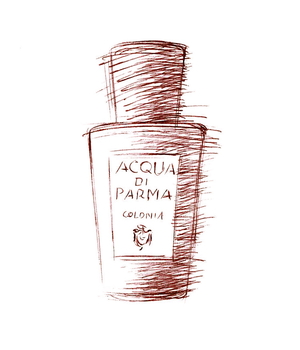 Before I start, I have to admit that the Acqua di Parma colognes have never really floated my boat, but very kindly the company have sent me some samples to try, and as it’s one of the most popular men’s fragrances I wanted to explore why that might be.
Before I start, I have to admit that the Acqua di Parma colognes have never really floated my boat, but very kindly the company have sent me some samples to try, and as it’s one of the most popular men’s fragrances I wanted to explore why that might be.
There are lots of things to like about Acqua di Parma Colonia. Its packaging, for starters, is wonderfully elegant: a golden-yellow, linen-textured cardboard tube, which splits exactly in half to reveal the bottle tightly nestled inside.
The bottle itself is a beautifully judged design, in plain glass with gently flared shoulders and a chunky black cap to match. And the typography is lovely: effortlessly stylish, with something of the 1920s about it. The whole package is an object lesson in how to make a product that says ‘classic’ and ‘quality’.
So what about the scent inside? Again, it’s classic and simple – perhaps a little too simple for me. The original Colonia was launched in 1916, and I’m presuming it was always a fresh, citrussy eau-de-cologne, though like pretty much every long-lived fragrance on the market it will almost certainly have been reformulated over the years.
That’s not always a bad thing, and today’s version may well smell more sophisticated than the original; Agua de Colonia by the Spanish brand Alvarez Gomez, for example, may conceivably have been less tinkered with, but by comparison it smells quite crude and harsh.
Not that Colonia has a particularly complex character: it’s intensely lemony when first you spray it on, but as the sharpness of the lemon fades into the background you get the clean, herbal smells of rosemary and lavender. So far so classic eau-de-cologne, but what makes Colonia different is the fact that it’s also blended with rose, which adds an unobtrusively feminine touch – a bit like the artificial jasmine scent at the centre of Eau Sauvage, though not nearly as striking in its effect.
The rose (I think) also makes Colonia smell rather talcum-powderish, which is pleasant enough but comes across as somehow rather old-ladyish – I guess because we associate powdery perfumes with an older generation. It certainly smells clean and fresh, in a soapy kind of way, and perhaps that explains its popularity among men for whom smelling clean and fresh is the main (and often only) purpose of perfume.
Personally I want to smell a bit more interesting than fresh laundry, and my other problem with Colonia is that it doesn’t last: within an hour or two I can hardly smell it on my skin. Again, that may be part of its appeal for men who are a bit nervous about wearing scent of any kind, so horses for courses, I suppose.
After its glory days in the 1920s, the Acqua di Parma company limped along until 1993, when it was bought by three rich Italian businessmen whose money came from Ferrari cars, Tod’s shoes and La Perla underwear. They launched scented candles and the like, but it wasn’t until after the luxury conglomerate LVMH took a stake in 2001 that the Colonia range was extended.
First came Colonia Assoluta in 2003, followed by Intensa in 2007, Essenza in 2010 and Intensa Oud in 2012. I have all of these versions apart from Intensa Oud, and I have to admit that, though I thought I had a fairly sensitive sense of smell, the differences between them are so subtle that I find them almost impossible to tell apart.
Colonia Assoluta was formulated by two of the best-known perfumers around today: Jean-Claude Ellena (creator of Vétiver Tonka, among others) and Bertrand Duchaufour (creator of many unusual fragrances, especially for L’Artisan Parfumeur), which is a bit like getting Debussy and Ravel to compose a duet. The results should be extraordinary, but these two great talents seem to have cancelled each other out: Colonia Assoluta is discreet to the point of invisibility, like a plain grey Hermès jumper.
What Duchaufour and Ellena seem to have done is shuffled a few of the ingredients of the original Colonia about a bit – changing the lavender for jasmine, for example – but it’s all so carefully balanced that the overall effect is almost identical, though you can smell a faint difference after an hour or two. Their work is certainly very subtle and clever, like Gus Van Sant’s frame-by-frame remake of Psycho, but you could argue that it’s equally pointless.
The same conjuring trick, if it’s fair to call it a trick, seems to have been achieved with the Essenza and Intensa versions: in each of them the ingredients are slightly different, but their smell is even less varied than their packaging (Essenza comes in a black tube, but is otherwise, ahem, a carbon copy).
Brilliant or bonkers? Delicious discreet or disappointingly dull? I’ll have to let you compare them for yourself. Maybe my nose isn’t as super-sensitive as it should be, but I’d be interested to hear what other people think. All the same, thank you to Acqua di Parma for letting me give them a try: they certainly look very handsome on my perfume shelf.
Caron
Pour un Homme
12 June, 2015
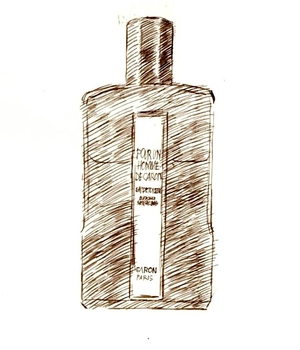 I’ve known about Caron’s Pour un Homme for many years – it’s often been hailed as one of the classics of men’s perfumery, and a couple of friends used to enthuse about it – but on the odd occasions when I’d tried it I couldn’t really see what there was to get so excited about. Despite its heritage it came in a cheap-looking bottle, and the testers I smelled did nothing much for me; to be honest I thought it was a bit dull.
I’ve known about Caron’s Pour un Homme for many years – it’s often been hailed as one of the classics of men’s perfumery, and a couple of friends used to enthuse about it – but on the odd occasions when I’d tried it I couldn’t really see what there was to get so excited about. Despite its heritage it came in a cheap-looking bottle, and the testers I smelled did nothing much for me; to be honest I thought it was a bit dull.
But then I got a new bottle, and either Richard Fraysse, Caron’s in-house perfumer, has smartened up the fragrance formula, or the scales have fallen from my eyes. The new bottle is certainly tidier than the old ones were: even my enthusiastic friends admitted that it looked like members of the Caron family had stuck the labels on, rather wonkily, by hand.
Actually the Carons haven’t been involved with Parfums Caron since the early 1900s, when Anne-Marie Caron sold her family perfume shop in the Rue de la Paix in Paris to the brothers Ernest and Raoul Daltroff. The brothers came from a cosmopolitan Russian Jewish family – their father ran a railway company in Saône et Loire – but for some reason they decided to get into perfume.
There doesn’t seem to be any record of Ernest training in perfumery, but he evidently had a natural talent, and he was helped, from 1906, by a one-time dressmaker called Félicie Wanpouille, who became what we’d now call the company’s creative director. Between them they developed a series of perfumes, with striking packaging and beautiful Baccarat bottles, and in 1911 they had their first big success with Narcisse Noir (still available but completely reformulated and apparently nothing like the original).
In 1919 came Tabac Blond, which for many contemporaries captured the spirit of the so-called Jazz Age, and more particularly to the outrageous young women who had taken to smoking cigarettes in public (again it’s still on the shelves, but the modern version smells nothing like the original, which was more like the wonderful and still untampered-with Knize Ten). Daltroff made Félicie Wanpouille co-owner of Caron in 1922.
Pour un Homme arrived in 1934, and has since established itself as one of the all-time fragrance classics. On the face of it it’s a simple enough smell: lavender, lavender and more lavender. But perfumes (at least good ones) are rarely as simple as they might seem, and Pour un Homme is no exception.
Like Guerlain’s ground-breaking Jicky from 1889, it mixes lavender with vanilla, but with very different results: sniffing them side by side is a good reminder of why a list of ingredients tells you very little about what a perfume will actually smell like. Jicky has a strange, sexy but disconcerting smell, which has sometimes been compared with cat wee, and it’s the (mostly synthetic) vanilla that you notice first.
Pour un Homme, by contrast, smells very like real lavender when you brush its leaves, and (to me at least) it’s got an almost minty cool freshness. It’s a while before you smell the vanilla – and actually if I didn’t know it was in there I’m not sure I’d have even noticed. Though the lavender smell stays for a long time, this extra touch of vanilla (plus some nice but unobtrusive musks) adds a gently comforting character, without being sweet or cloying in any way.
All in all I think Pour un Homme is a lovely fragrance, if not one that’s likely to get you noticed at a party; this is something I’d wear for myself rather than for other people.
As for its brilliant creator, Ernest Daltroff, he came to a rather sad end. Though he escaped the Nazi invasion of France in 1939, moving first to Canada and then New York, he was by this time in his seventies, frail and depressed, and he died just three years later.
Félicie Wanpouille continued running Caron until she retired in 1962, when she sold the company to Parfums Revillon. In 1967 the brand was bought by the American pharmaceuticals company AH Robins, which opened a flagship store on the Avenue Montaigne. In 1988 Caron was sold again, this time to a French hair-products and cosmetics group, whose owner, Patrick Alès, had long admired the brand. Today it’s run by Patrick’s son Romain. Long may it prosper.
Slugs and snails and puppy-dogs’ tails
23 April, 2015
A while back I attended a perfume training day with Roja Dove, perfumer extraordinaire in several senses of the word. A small group of us smelled something like a hundred different perfume ingredients, from bergamot to tuberose (the pure extract of which smells far more refined than any of the so-called ‘tuberose’ perfumes I’ve sampled).
Lots of surprises: extract of daffodil smells like hay; galbanum like freshly-podded peas. Fine lavender oil has an oddly sweaty side to it, which I think is one of the things I smell in Guerlain’s legendary Jicky. Roja brings in beaver glands, which gave us the wonderful leathery smell of castoreum (used in Chanel’s Cuir de Russie), and the greasy scrapings from the Ethiopian civet cat, which has the farmyard reek of fresh cow-pats but – in minute quantities – adds a disquieting hint of sex to any perfume in which it (or its synthetic equivalent) is used.
It was a fascinating and really useful day, though it must take daily practise to memorise so many ingredients. What surprised me, though, was the imprecision of perfume terminology. Particularly extracts come from very specific sources: galbanum, for example, derives from the roots of particular species of Iranian fennel (Ferrula gummosa and Ferrula rubricaulis), yet in our training day it was vaguely described as coming from ‘an umbellifer root’. Given that there are over 3,700 individual species in the umbellifer family (now renamed the Apiaceae), that wasn’t much help – cow-parsley is an umbellifer too, but I bet its roots don’t smell like fresh peas.
And as for daffodil smelling like hay, I wanted to know which daffodil: there are between 30 and 70 species of narcissus (the Latin term for daffodil) and hundreds and hundreds of varieties, many of which smell very different from each other.
It struck me as an odd contrast between how incredibly precise perfume chemists have to be, describing specific fragrances down to the molecular level, and yet how imprecise so much perfume terminology seems to be at the same time. If perfumers themselves use such vague descriptions, is it any wonder that we, the perfume-buying public, find the subject so confusing and so hard to understand?
Guerlain
Cologne du Parfumeur
6 August, 2014
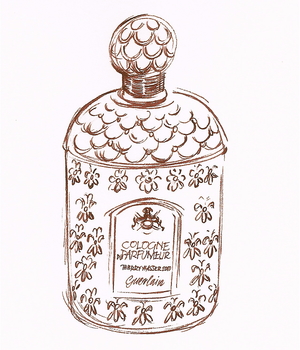 If there’s one scent that appeals to pretty much everyone then surely it’s eau-de-cologne, the zesty, refreshing blend of lemon and herbs whose (probably medicinal) origins are lost in the mists of time. Its oldest surviving surviving incarnation is the German No. 4711 Echt Kölnisch Wasser from – where else – Cologne, which you can buy for not very much from pretty much anywhere, but there are hundreds of other versions, from the cheap and nasty all the way up to Chanel’s divine (and divinely expensive) Eau de Cologne.
If there’s one scent that appeals to pretty much everyone then surely it’s eau-de-cologne, the zesty, refreshing blend of lemon and herbs whose (probably medicinal) origins are lost in the mists of time. Its oldest surviving surviving incarnation is the German No. 4711 Echt Kölnisch Wasser from – where else – Cologne, which you can buy for not very much from pretty much anywhere, but there are hundreds of other versions, from the cheap and nasty all the way up to Chanel’s divine (and divinely expensive) Eau de Cologne.
The basic ingredients of eau-de-cologne are extracts of citrus fruits, which give it its instant freshness, blended with a variety of herbs, usually including lavender and rosemary, which add extra staying-power and warmth. It’s more of a style than a formula, and every different eau-de-cologne has a slightly different combination of ingredients, though they all share a broadly similar character. They all suffer from one drawback, too, which is that they quickly fade away on the skin.
As one of the most historic perfume companies, Guerlain has produced a number of different takes on eau-de-cologne over the years, starting with Eau de Cologne Impériale in 1853, followed by Eau de Cologne du Coq in 1894, the glorious Eau de Fleurs de Cédrat in 1920, and Eau de Guerlain in 1974.
Cologne du Parfumeur was launched in 2010, and is the first not to have been dreamed up by a member of the Guerlain family. Its creator, the Swiss perfumer Thierry Wasser, became the company’s in-house perfumer in 2008, after the retirement of Jean-Paul Guerlain. Wasser’s interpretation of the classic eau-de-cologne retains plenty of citrusy zing, but with more orange than lemon in the mix, which makes it smell slightly sweeter and less astringent than the general run of colognes. The blend of orange used here is particularly ‘green’, which makes a bit more sense if you think of orange flowers surrounded by their glossy dark-green leaves.
Wasser accentuates this ‘greenness’ with tiny amounts of fresh-smelling mint, as well as plenty of lavender and rosemary, those classic eau-de-cologne herbs. I think I also smell a little bit of bracing juniper, which gives Voyage d’Hermès its gin-and-tonic swing. Overall it’s a gentle, appealing scent, and Wasser has given it extra staying-power thanks, it seems, to the inclusion of long-lasting synthetic musks, which add their own soft, slightly sensual touch.
Cologne du Parfumeur comes in Guerlain’s classic ‘bee’ bottle, with fish-scale patterned shoulders, 69 stylised embossed bees on the sides and a rather cheap-feeling plastic top, though customised, hand-gilded versions are available for a suitable fee. What’s most interesting is its label, which includes ‘Thierry Wasser 2010’ – a new departure for Guerlain, and one of the earlier signs that perfumers had started becoming celebrities in their own right.
Francis Kurkdjian
Pluriel
14 July, 2014
Apologies for the recent radio silence: holidays followed by a family drama and so-far unsuccessful job-hunting. Normal service will (I hope) be renewed before long, but in the meantime I thought it might be an idea to do a quick recent-releases round-up of some perfumes I’ve kindly been sent in the last couple of months that don’t, I feel, merit a full review of their own.
I’ll start with PLURIEL, the latest men’s fragrance from the super-talented French-Armenian perfumer Francis Kurkdjian. Listening to him at the London launch I couldn’t help but like him: he speaks with such knowledge and passion, and he draws such interesting parallels between perfume and other kinds of artistry. His fragrances are excellently packaged too, with a nesting double box and a nicely proportioned bottle like a chamfered cube.
My problem is that his perfumes just don’t seem to suit me: I’ve tried them all so far and none of them appeal (see my review of Absolue Pour le Matin). The men’s version of Pluriel takes two of the main elements in male perfumery – the smells of lavender and wood – but Kurkdjian has given them a contemporary twist by using lavender absolute rather than lavender oil, and by mixing a number of different woody smells to create an impressionist ‘blur’ of woodiness. As he explains, lavender absolute has the same overall smell as lavender oil, but it has more depth; a bit like playing the same tune an octave lower.
It’s sophisticated perfumery, but while I admire Kurkdjian’s defence of synthetic ingredients, which he compares to Pantone colour charts for giving him a far greater range of effects than natural ingredients ever could, I think that, ironically, it’s precisely their synthetic smell that puts me off his fragrances.
As a professional perfumer with a long and successful industry career, he also says that he wants to create commercial scents: that makes good financial sense, especially for someone running his own relatively small business, but the downside (and again this is just how it seems to me) is that they can end up smelling like pretty much every other big-selling men’s perfume out there, which is how Pluriel smells to me. And given how much thought and care has gone into creating it, I think that’s a shame.
Angela Flanders
Artillery No. 4
10 March, 2014
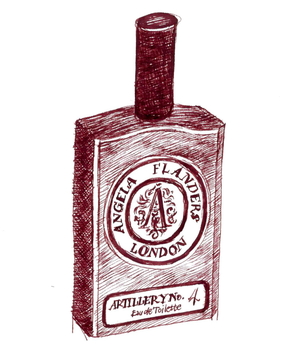 Picked up for a fiver in a Vogue House charity sale, entirely on the look of the bottle (you had to move fast), Artillery No. 4 turns out to be an unexpected treat. Launched in 2012, it was created by Angela Flanders, an English perfumer whose scents have an appealingly home-made quality which extends, in this case, to the label’s hand-written ‘4’.
Picked up for a fiver in a Vogue House charity sale, entirely on the look of the bottle (you had to move fast), Artillery No. 4 turns out to be an unexpected treat. Launched in 2012, it was created by Angela Flanders, an English perfumer whose scents have an appealingly home-made quality which extends, in this case, to the label’s hand-written ‘4’.
The name is a nod to the location of her shop in Artillery Passage, a splendidly Dickensian alleyway just east of the City of London. But it’s also a good choice for this particular perfume, as No. 4 has a whiff of gunpowder about it, or at least a hint of bonfire-night smoke.
It’s actually based around vetiver, the earthy-smelling tropical grass root that gives a bracingly bitter character to many classic men’s fragrances, but for once vetiver plays a fairly discreet background role. The first thing I smell, apart from that smokiness, is lavender (lots of it), another classic male scent – this is a very masculine fragrance. It’s spicy without being overpowering, with a gentle touch of orange provided by bergamot oil.
I like Artillery No. 4 a lot, though it’s not particularly long-lasting, which is unusual in a perfume that’s based on vetiver. It also comes in a simple yet attractive bottle, which is more than can be said for so many fragrances these days. How nice to stumble across a fragrance that deserves to be better known.
Christian Dior
Eau Sauvage
3 March, 2014
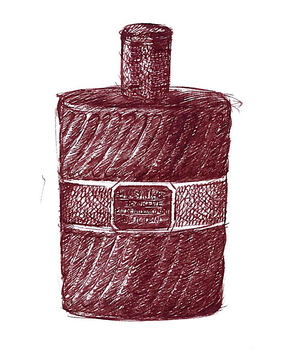 How did I get this far without reviewing Eau Sauvage? And now that I’ve finally got round to reviewing it, how am I going to do justice to such an iconic perfume? OK, I’ve covered Eau Sauvage Extrême, but that’s a dreary spin-off and bears little relation to the glorious real thing. So, deep breath now, and here we go.
How did I get this far without reviewing Eau Sauvage? And now that I’ve finally got round to reviewing it, how am I going to do justice to such an iconic perfume? OK, I’ve covered Eau Sauvage Extrême, but that’s a dreary spin-off and bears little relation to the glorious real thing. So, deep breath now, and here we go.
Created by the legendary perfumer Edmond Roudnitska, Eau Sauvage was launched in 1966, and it’s deservedly regarded as one of the greatest men’s perfumes of all. Roudnitska’s took the idea of a classic men’s cologne, packing it full of fresh, zingy, clean-smelling bergamot-orange oil from southern Italy, but then he did a brilliant thing, by blending it with an equally strong dose of a recently patented chemical called Hedione.
Hedione smells of jasmine – as well it might, since it was discovered by chemists during the process of deconstructing the molecular bits and bobs that, collectively, create natural jasmine’s heady, narcotic scent. Hedione’s real name is methyl dihydrojasmonate, and it was first isolated in 1958 by Dr Edouard Demole, who worked for the giant Swiss perfume company Firmenich.
Methyl dihydrojasmonate has a light jasmine smell but also something citrusy about it, giving Edmond Roudnitska a jigsaw piece that fitted into both the bergamot orange of a man’s cologne, and also had something – but crucially not too much – of natural jasmine’s sumptuous, powerfully floral scent, which most men would have considered far too feminine to wear.
To this Roudnitska added lavender – another floral scent, though this time one whose herby, faintly sweaty character had made it a long-standing male favourite – as well as a range of other, less pronounced ingredients including oakmoss (originally extracted from a lichen that smells of forests after rain) and patchouli, which in small amounts, I’m guessing, enhances the dandified character of Eau Sauvage without pushing it over into full-on let-it-all-hang-out hippiness.
A great perfume is one thing, and an all-too-rare thing at that, but it’s rarer still for a brilliant perfume to be supported by great marketing and presented in a great bottle. And here Eau Sauvage struck lucky again. Christian Dior died in 1957 of a heart attack, but under Yves Saint Laurent and then Marc Bohan, the company commissioned a series of sexy, tongue-in-cheek yet effortlessly elegant posters from René Gruau, arguably the greatest fashion illustrator of the 20th century. They certainly added to Eau Sauvage’s masculine appeal.
Few of us think a great deal about the bottles that contain the perfume we use, though they do have their collectors (most of whom, oddly, seem to have lost interest in the perfumes they contain). But some bottles repay a second glance, and Eau Sauvage is one of them. It was designed by Pierre Camin, who worked for Baccarat and created many of the bottles for the perfumer François Coty, and its chic silver cap, embossed with a pattern of tiny overlapping scales like a freshly-caught mackerel, is said to have been inspired by the silver thimble that Christian Dior always had to hand. The diagonally ridged sides of the bottle itself, meanwhile, are supposed to resemble the regular pleats of a Dior dress, though that seems a bit of a stretch to me.
I could go on, but in the unlikely event that you’ve never smelled Eau Sauvage, or think of it as a tired old dinosaur, I’d rather you headed out and tried it for yourself. Just be careful, though, as Dior have experimented with different versions over the years, and what’s now called Eau Sauvage Extrême (which you’d think would just be a stronger version, as indeed it used to be) is now a completely different fragrance, pleasant enough in a dull way but far less exciting than the original.
My last words, though, go to Edmond Roudnitska, not only because he was a perfumer of genius, but also because he also had something so important to say about marketing that it should be tattooed on the forehead of every perfume-company PR.
‘The choice of a perfume,’ he said, ‘can only rest on the competence acquired by education of olfactive taste, by intelligent curiosity and by a desire to understand the WHY and the HOW of perfume. Instead, the public [is] given inexactitudes and banalities. The proper role of publicity is to assist in the formation of connoisseurs, who are the only worthwhile propagandists for perfume, and it is up to the perfumers to enlighten, orient and direct the publicity agents.’
Here’s to the day his dream comes true.